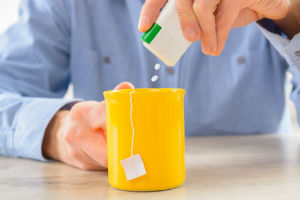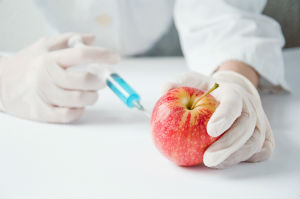Two of the Most Dangerous Artificial Sweeteners
Published March 28, 2015 Artificial sweeteners were initially designed to be sugar substitutes and a helpful tool for the battle against the bulge. Unfortunately, the state of obesity in the world has gotten worse, and artificial sweeteners are clearly not helping. You can find sugar substitutes in diet sodas, yogurt, and a host of other food products. These artificial sweetener additives mimic the flavor of sugar but offer no useful energy and may in fact be toxic.
The Two Most Concerning Artificial Sweeteners
There are five dangerous sugar substitutes that are approved for consumer use: saccharin, neotame, acesulfame potassium, aspartame, and sucralose. Of the five main artificial sweeteners, sucralose and aspartame are the most pervasive and dangerous substitutes found in products on store shelves today.
1. Sucralose
This relatively new additive is marketed under the name Splenda. Sucralose is basically denatured sucrose. Its preparation involves chlorinating sucrose, chemically changing the structure of the sugar molecules by substituting three chlorine atoms for three hydroxyl groups. [1] Chlorine a known carcinogen, so why would the FDA allow toxic materials to be used in our food and beverages?
It's uncertain as to why the FDA approved sucralose knowing the nature of chlorine. You should know too that it was approved even with the pre-approval research revealed possible toxicity of the substance.
There have been no long-range studies of the effects of sucralose. The same thing happened with tobacco. As a result of not performing the required epidemiological research, it took years to track the dangerous effects of smoking cigarettes. It’s unfortunate and confusing that the same mistake is repeated even with the initial negative indications and checks and balances that are now in place. If the FDA does not step in and make monitoring and research possible and necessary, then we can’t readily learn the safety of such substances, including food items.
2. Aspartame
This additive is sold under the names Equal and NutraSweet and there are thousands of other everyday products that contain aspartame, too. Just to name a few: yogurt, sodas, pudding, tabletop sugar substitutes, chewing gum, bread, etc. For its approval we have to thank the Searle Company for falsifying reports, and unscrupulous attorneys for delaying legal proceedings. [2] Once the statute of limitations ran out and the product was once again up for review, many discrepancies came to light between reported versus actual findings.
Consumers lodge complaints about NutraSweet, to the tune of “80% of all complaints about food additives,” but Betty Martini reported that the FDA has yet to move on any of them. In spite of this inaction by the FDA, there are indications that this sweetener is toxic. According to Ms. Martini, in a report from Flying Safety, an official United States Air Force publication, US Air Force pilots were warned not to consume Aspartame in any amounts at all. Why? “Aspartame has been investigated as a possible cause of brain tumors, mental retardation, birth defects, epilepsy, Parkinson’s Disease, Fibromyalgia, and Diabetes.” [3] And the FDA has made no move to regulate this toxic substance.
How to Eliminate Toxins from Artificial Sweeteners
Check your food labels at home and throw out everything that has on its label:
- Aspartame
- Acesulfame Potassium (K)
- Saccharin or Sucralose
- NutraSweet®
- Splenda®
Use natural sweeteners like raw, organic honey. Avoid products that are labeled “low calorie,” “diet,” “sugar free,” or “no sugar added” since they all likely contain sugar additives. Drink purified water instead of diet drinks. Do NOT drink tap water because our drinking water has now been contaminated with sucralose. [4] Ask your government representatives and the FDA to ban toxic artificial sweeteners. In the mean time, regular intestinal tract and liver cleansing can help fight the toxic effects of artificial sweeteners.
-Dr. Edward F. Group III, DC, NP, DACBN, DCBCN, DABFM
References:
- AlDeeb OA, Mahgoub H, Foda NH. Sucralose. Profiles Drug Subst Excip Relat Methodol. 2013;38:423-62. doi: 10.1016/B978-0-12-407691-4.00010-1.
- Pigi Cipelli. The Lowdown on Sweet? The New York Times.
- FDA. Reported Aspartame Toxicity Effects. FDA.
- Mawhinney DB, Young RB, Vanderford BJ, Borch T, Snyder SA. Artificial sweetener sucralose in U.S. drinking water systems. Environ Sci Technol. 2011 Oct 15;45(20):8716-22. doi: 10.1021/es202404c.
The post Two of the Most Dangerous Artificial Sweeteners appeared first on Dr. Group's Natural Health & Organic Living Blog.
More from Dr. Group's Blog:





